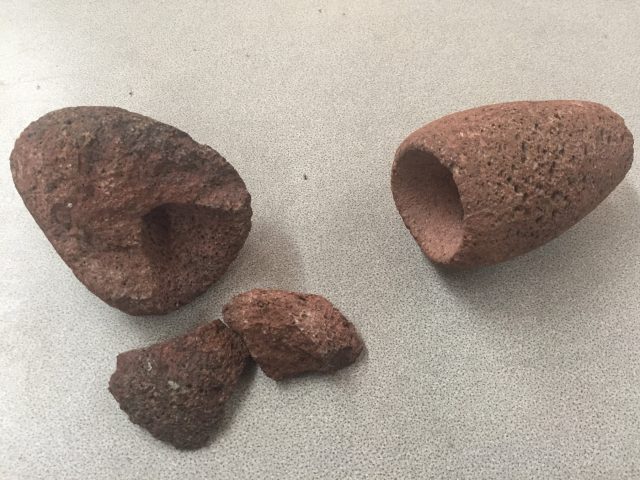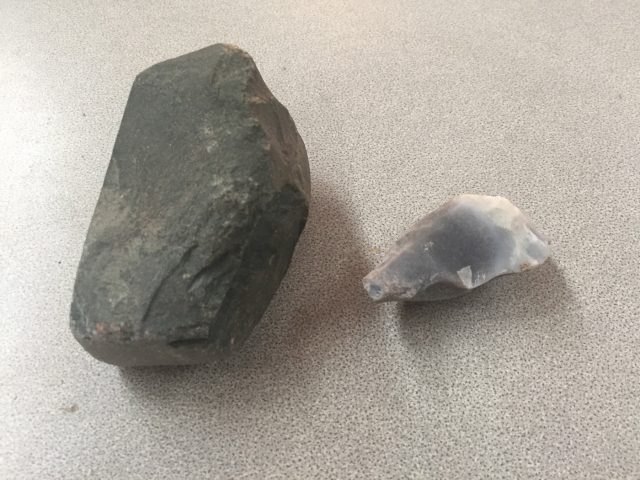- Home
- >
- Preservation Archaeology Blog
- >
- Experimental Archaeology and Stone Pipe Constructi...
Chris La Roche, Pima Community College
(July 10, 2017)—Experimental archaeology is the practice of attempting to recreate items from the archaeological record using materials, techniques, and technologies that might have been used in the period in question. This allows us to better understand the contexts and processes which lead to artifact deposition, as well as have a window into life in the past.
I sought to further explore ground stone techniques and technologies through the production of a ground stone pipe as a part of my project for the recent outreach fair. Pipe and tobacco use was widespread among the peoples of the Southwest from the late Archaic into historic periods. Pipes came in a number of varieties and shapes across the region. They were made of either stone (both coarse and fine-grained stones) or of fired-clay ceramic. As a model for my attempted reproduction I used examples recovered from the Las Capas site in the Tucson Basin, as well as a reproduction previously produced by Allen Denoyer. These took the form of a cylindrical body with two conical chambers drilled, one from the front and one from the back, for the tobacco and bone pipe stem.

This project became an exercise in patience. I used vesicular basalts of varying hardness sourced from along the Gila River as I made three attempts at crafting a stone pipe. The first pipe cracked due to over-aggressive drilling of the tobacco chamber; the second pipe failed due to the rock being too soft. The third pipe attempt remains about 75% complete [at the time of writing] but has been the most predictable, probably as a result of the stone’s harder nature.
Through these experiences I have learned various techniques and their results. The pipe exteriors are formed via pecking with a hard rock. The rim edges tend to shatter even if pecked lightly, so grinding with a sandstone slab proved the preferable method. The chambers were ground and drilled with a flaked biface that was progressively reduced into a narrower tool as the borehole of the chamber reduced.

I learned several things applicable to archaeology, including information about the tool assemblages that might have been used to produce the stone pipe. The tool kit for this may include a pecking stone, stone slab, and a biface (along with debitage resulting from the reduction of the biface). This might shed light on the contexts in which we find artifacts in the archaeological record. The phases of production for pipes are also clearer, which may shed light on what is found in the archaeological record—if, for example, unfinished artifacts were discarded or lost.
One thought on “Experimental Archaeology and Stone Pipe Construction”
Comments are closed.
Explore the News
-
Join Today
Keep up with the latest discoveries in southwestern archaeology. Join today, and receive Archaeology Southwest Magazine, among other member benefits.
Good Job, Chris!